- Exploring the Language of Flowers
- The Origins of Floral Language
- Popular Flower Meanings
- Creating Meaningful Flower Arrangements
- The Importance of Flower Symbolism
- Cultural Significance
- Expressing Emotions
- Personalized Meanings
- Aesthetics and Beauty
- Flower Symbolism in Different Cultures
- Asia
- Europe
- Middle East
- Africa
- America
- The Symbolism of Roses
- Love and Romance
- Beauty and Elegance
- Spiritual and Symbolic Significance
- Conclusion
- The Meaning behind Sunflowers
- 1. Joy and Happiness
- 2. Positivity and Optimism
- 3. Loyalty and Longevity
- 4. Adoration and Admiration
- 5. Spiritual and Healing Properties
- 6. Harvest and Abundance
- Flowers for Special Occasions
- Symbolic Flowers for Weddings
- Roses
- Tulips
- Peonies
- Lilies
- Flowers for Funerals and Mourning
- Sympathy Flowers
- Funeral Wreaths
- Sprays and Crosses
- Plants
- Choosing the Right Flowers
- Q&A:
- What is the meaning behind flowers?
- What do roses symbolize?
- What do sunflowers symbolize?
- What does the lily symbolize?
- What is the symbolism behind daisies?
- What do tulips symbolize?
- What is the meaning behind daffodils?
- Video: Flower Color Meaning and Symbolism
Flowers have been used as symbols for centuries, carrying meanings that vary across different cultures and time periods. These symbolic meanings have been attributed to various flowers based on their appearance, fragrance, and cultural associations. The language of flowers, also known as floriography, has been used to convey messages of love, friendship, and even political or social statements.
One of the most well-known flowers with a symbolic meaning is the rose. The rose has long been associated with love and romance, and is often given as a symbol of affection. However, different colored roses can carry different meanings. For example, a red rose symbolizes passionate love, while a pink rose represents gentleness and admiration. White roses are often associated with purity and innocence.
Another flower with a rich symbolic meaning is the lotus. In many Asian cultures, the lotus is seen as a symbol of purity, enlightenment, and spiritual growth. Its ability to emerge from muddy waters and blossom into a beautiful flower has made it a powerful metaphor for personal transformation and overcoming adversity.
Flowers can also have symbolic meanings based on their fragrances. For example, lavender is often associated with relaxation and tranquility, while jasmine represents sensuality and romance. The scent of flowers has the power to evoke emotions and create connections, making them a popular choice for special occasions and important events.
Understanding the symbolic meanings behind flowers can add depth and significance to the act of giving and receiving them. Whether it’s a bouquet of roses to express love or a simple daisy to convey friendship, flowers have the power to communicate emotions and create lasting memories.
Exploring the Language of Flowers
Flowers have been used for centuries to convey messages and emotions. Each flower has its own meaning and symbolism, and understanding the language of flowers can add a special touch to any bouquet or floral arrangement.
The Origins of Floral Language
The use of flowers as a means of communication can be traced back to ancient civilizations such as the Greeks and Romans. In these cultures, flowers were often used to represent gods and goddesses, as well as messages of love, friendship, and sympathy.
During the Victorian era, the language of flowers became especially popular. Victorians would use bouquets of flowers to send secret messages to their loved ones, as certain flowers and their arrangements carried specific meanings. They would even use flower dictionaries to decipher these messages.
Popular Flower Meanings
While the meanings of flowers can vary depending on the culture and time period, there are some widely recognized meanings that have stood the test of time. Here are a few examples:
- Roses: Roses are a classic symbol of love and romance. Different colors of roses can also convey different messages, with red roses symbolizing passionate love, yellow roses symbolizing friendship, and white roses symbolizing purity.
- Tulips: Tulips are often associated with springtime and new beginnings. They can also symbolize perfect love and forgiveness.
- Lilies: Lilies are often associated with funerals and sympathy, symbolizing the restoration of innocence for the deceased. They can also represent purity and rejuvenation.
- Daisies: Daisies are often associated with innocence and purity. They can also symbolize loyal love and beauty.
Creating Meaningful Flower Arrangements
When creating a flower arrangement or bouquet, it’s important to consider the meanings of the flowers you choose. By carefully selecting flowers that convey your intended message, you can create a truly meaningful and thoughtful gift.
Additionally, the colors and arrangement of the flowers can also contribute to the overall message. For example, a bouquet of red roses arranged in a heart shape can convey a clear message of love, while a bouquet of mixed flowers arranged in a loose and natural style can convey a sense of carefree beauty.
| Flower | Meaning |
|---|---|
| Roses | Love, romance, friendship |
| Tulips | New beginnings, love, forgiveness |
| Lilies | Sympathy, innocence, purity |
| Daisies | Innocence, purity, loyal love |
In conclusion, the language of flowers adds an extra layer of meaning to floral gifts. By understanding the symbolism behind each flower, you can convey your feelings and emotions in a heartfelt and thoughtful way.
The Importance of Flower Symbolism
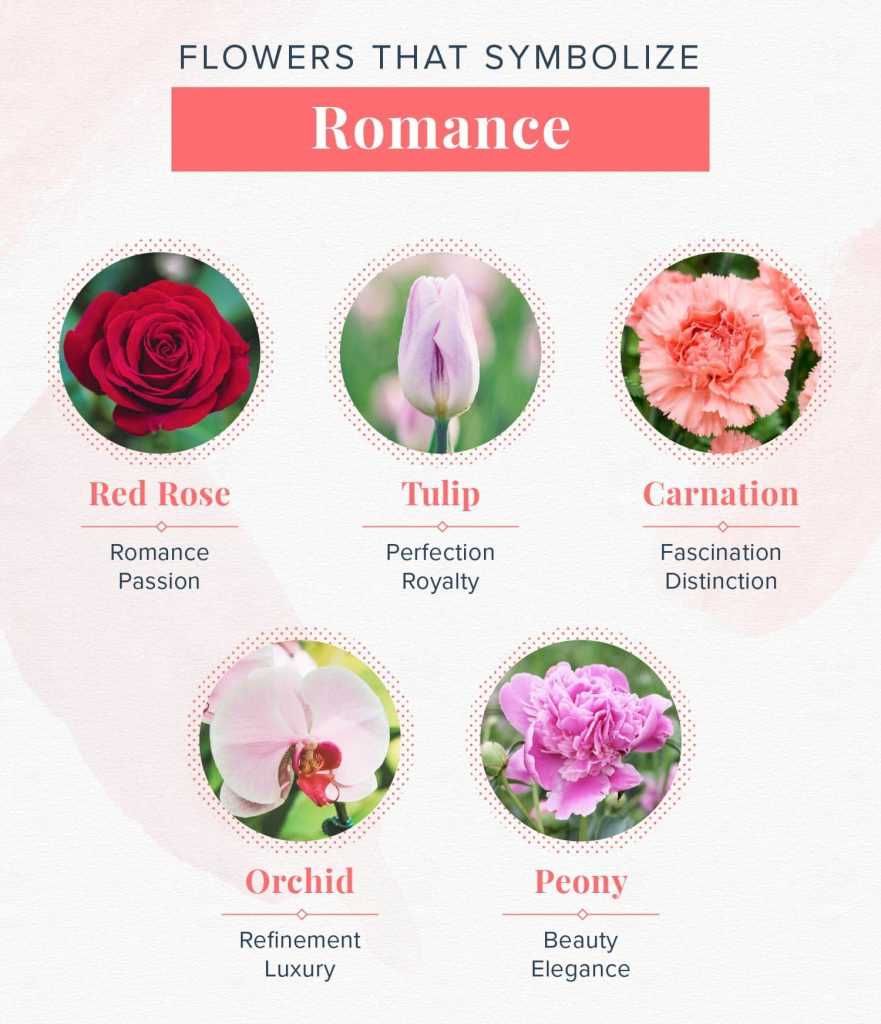
Flower symbolism is a rich and diverse tradition that has been passed down through generations. It holds great importance in various cultures and societies, offering a unique way to convey emotions, messages, and meanings. Understanding the symbolism behind different flowers can add depth and significance to any occasion or interaction.
Cultural Significance
Flower symbolism plays a significant role in various cultures around the world. Different flowers are often associated with specific meanings and traditions. For example, in Japanese culture, the cherry blossom symbolizes the ephemeral nature of life, while the lotus flower represents purity and enlightenment in Hinduism and Buddhism.
Flowers are commonly used in rituals, ceremonies, and celebrations, such as weddings, funerals, and religious gatherings. They can serve as offerings, decorations, or gifts to express emotions and sentiments. By understanding the cultural significance of flower symbolism, one can show respect and appreciation for different customs and traditions.
Expressing Emotions
Flowers have long been used to convey heartfelt emotions and messages. Each flower has its own unique symbolism, allowing people to express their feelings without using words. For example, red roses are often associated with love and romance, while white lilies represent purity and innocence.
By choosing the appropriate flowers and floral arrangements, individuals can communicate their emotions, such as love, gratitude, sympathy, or apology. The language of flowers enables people to express their deepest sentiments and connect with others on a profound level.
Personalized Meanings
While flower symbolism often has cultural and universal meanings, individuals can also assign their own personalized interpretations to flowers. The associations and memories people have with specific flowers can shape their own unique symbolism.
For example, a certain flower may remind someone of a cherished memory, a loved one, or a significant event in their life. This personal symbolism allows individuals to create a deeper connection with flowers and use them as a means of self-expression and reflection.
Aesthetics and Beauty
In addition to their symbolic meanings, flowers are appreciated for their natural beauty and aesthetics. They can bring joy, delight, and a sense of tranquility to any space. Whether used as decorations in homes or gardens, or incorporated into artworks and designs, flowers have an innate ability to enhance the visual appeal of their surroundings.
The importance of flower symbolism lies in its ability to transcend language and cultural barriers, allowing individuals to express themselves and connect with others on a deeper level. Whether as a gift, decoration, or personal reflection, flowers hold a special place in human society and continue to captivate our imagination and emotions.
Flower Symbolism in Different Cultures
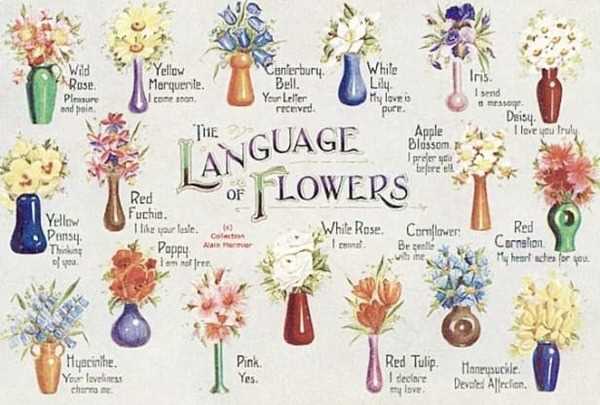
Flowers have been imbued with symbolic meanings in various cultures around the world. Here are some examples of how flowers are interpreted and valued in different traditions:
Asia
- Lotus: The lotus flower holds great significance in Asian cultures, particularly in Buddhism. It represents purity, enlightenment, and rebirth.
- Cherry Blossom: In Japan, cherry blossoms symbolize the transience of life and the beauty of fleeting moments.
- Chrysanthemum: This flower holds special significance in China, where it represents longevity, good fortune, and perfection.
Europe
- Rose: The rose is a ubiquitous flower in Western culture and holds various meanings depending on its color. Red roses symbolize love and passion, while yellow roses represent friendship.
- Lily: In Christian traditions, the lily is associated with purity and the Virgin Mary. It is often used in religious ceremonies and represents purity, innocence, and rebirth.
Middle East
- Tulip: The tulip holds great significance in many Middle Eastern cultures, particularly in Turkey and Iran. It represents paradise on Earth and is often associated with love and passion.
- Jasmine: Jasmine is a fragrant flower that is highly valued in Middle Eastern cultures. It represents love, beauty, and sensuality.
Africa
- Protea: The protea flower is native to South Africa and holds cultural and symbolic significance. It represents growth, change, and transformation.
- Amaryllis: Amaryllis flowers are often associated with beauty and strength in African cultures. They are used in rituals and celebrations to symbolize endurance and determination.
America
- Sunflower: In Native American cultures, sunflowers represent harvest, abundance, and vitality. They are often used in ceremonies and rituals to honor the sun and bring positive energy.
- Marigold: Marigolds hold special significance in Mexican culture, particularly during Day of the Dead celebrations. They represent the fleeting nature of life and are used to honor deceased loved ones.
These are just a few examples of how flowers are symbolized in different cultures. The meanings and interpretations of flowers can vary widely, so it is important to consider the cultural context when giving or receiving flowers as a gift.
The Symbolism of Roses
Roses are one of the most popular and beloved flowers in the world. Not only are they admired for their beauty, but they also have deep symbolism and meaning attached to them.
Love and Romance
Roses have long been associated with love and romance. The red rose, in particular, is a symbol of passionate love and desire. It is often exchanged between lovers and used to express deep affection and longing. Red roses are a classic choice for Valentine’s Day and anniversaries.
Other colors of roses also hold romantic meanings. Pink roses symbolize admiration and gentleness, while white roses represent purity and new beginnings. Yellow roses can convey feelings of friendship and joy.
Beauty and Elegance
Roses are admired for their beauty and elegance. They are often used in bouquets and floral arrangements to add a touch of sophistication and grace. The intricate petals and lush colors of roses make them a symbol of aesthetic appeal and refinement.
Spiritual and Symbolic Significance
In addition to their romantic and aesthetic meanings, roses also hold spiritual and symbolic significance in various cultures and religions.
In Christianity, the rose is associated with the Virgin Mary and is seen as a symbol of divine love. In Islam, roses are considered a representation of beauty and paradise. In Buddhism, the rose symbolizes the unfolding of spiritual understanding.
Conclusion

The symbolism of roses is rich and varied, encompassing themes of love, romance, beauty, and spirituality. Whether gifted to a loved one or used in celebrations and rituals, roses continue to hold a special place in our hearts and cultures.
The Meaning behind Sunflowers
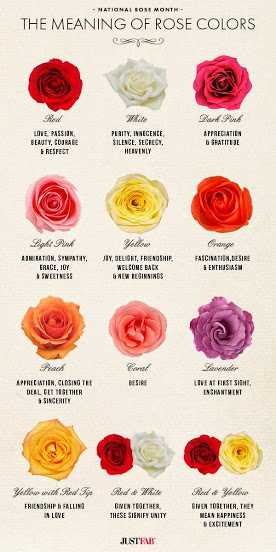
Sunflowers, with their bright yellow petals and tall, sturdy stems, have long been associated with joy, warmth, and positivity. These radiant flowers are often regarded as symbols of happiness and success. Here are some key meanings and symbolism associated with sunflowers:
1. Joy and Happiness
Sunflowers are commonly associated with joy and happiness due to their vibrant color and resemblance to the sun. They can brighten up any space and bring a smile to a person’s face.
2. Positivity and Optimism
The bright and uplifting nature of sunflowers symbolizes positivity, optimism, and a sunny disposition. They serve as a reminder to stay positive, even during difficult times.
3. Loyalty and Longevity
Just like sunflowers track the sun across the sky, they are often seen as a symbol of loyalty and longevity. They represent the unwavering dedication and commitment to a cause or relationship.
4. Adoration and Admiration
Sunflowers are often associated with adoration and admiration. Their beauty and striking appearance make them a popular choice for expressing admiration or romantic feelings towards someone.
5. Spiritual and Healing Properties
In some cultures, sunflowers are considered to have spiritual and healing properties. They are believed to bring positive energy, happiness, and good fortune to those who possess or receive them.
6. Harvest and Abundance
Due to their association with the sun and their large size, sunflowers also symbolize abundance, fertility, and a bountiful harvest. They represent prosperity and success in various aspects of life.
Overall, sunflowers are a powerful symbol of joy, positivity, and success. They can uplift spirits, bring warmth, and convey feelings of admiration and adoration. Whether gifted or displayed, sunflowers are sure to brighten up any space and bring a sense of happiness to those who encounter them.
Flowers for Special Occasions
Flowers are a popular choice for special occasions as they can convey a variety of messages and emotions. Here are some popular flowers that are often chosen for specific events:
- Weddings: Roses are a classic choice for weddings as they symbolize love and beauty. Other popular choices include lilies, which represent purity, and peonies, which symbolize a happy marriage.
- Birthdays: Gerbera daisies are often given for birthdays as they represent cheerfulness and joy. Sunflowers are also a popular choice as they symbolize happiness and longevity.
- Anniversaries: Orchids are often chosen for anniversaries as they represent love, beauty, and strength. Carnations are also a traditional choice as they symbolize deep love and affection.
- Graduations: Daisies are commonly given to graduates as they symbolize new beginnings and the start of a new chapter in life. Roses and sunflowers are also popular choices to celebrate this achievement.
- Get Well Soon: Bright and cheerful flowers like daffodils and tulips are often given to wish someone a speedy recovery. Lilies are also a good choice as they symbolize hope and healing.
- Sympathy: White lilies are commonly chosen for sympathy occasions as they symbolize purity and innocence. White roses are also a popular choice as they represent reverence and honor.
When choosing flowers for special occasions, it’s important to consider the recipient’s preferences and the message you want to convey. Whether you’re celebrating a happy occasion or offering condolences, there’s a flower that can help you express your emotions.
Symbolic Flowers for Weddings
Flowers have long been used to symbolize love, beauty, and new beginnings, making them the perfect choice for weddings. Each flower has its own unique meaning and can help to convey a specific message on this special day. Here are some popular symbolic flowers often chosen for weddings:
Roses
- Roses are the ultimate symbol of love and romance, making them a classic choice for weddings.
- Red roses signify deep love, passion, and commitment.
- White roses represent purity, innocence, and new beginnings, making them a popular choice for bridal bouquets.
- Pink roses symbolize grace, admiration, and gratitude, making them a great option for bridesmaids bouquets or centerpieces.
Tulips
- Tulips are often associated with perfect love and are a wonderful choice for weddings.
- Red tulips symbolize true love and passion.
- Yellow tulips represent cheerful and happy thoughts, making them a great flower for a joyful celebration.
- White tulips symbolize forgiveness and purity, making them a lovely choice for wedding arrangements.
Peonies
- Peonies are loved for their large, lush blooms and are often seen as a symbol of prosperity and romance.
- Pink peonies are a popular choice for weddings as they represent love, beauty, and femininity.
- White peonies symbolize purity and honor, making them a perfect choice for a bridal bouquet.
- Red peonies are associated with passion and deep emotions, adding a touch of drama to any floral arrangement.
Lilies
- Lilies are known for their graceful beauty and are often chosen for weddings due to their symbolism.
- White lilies are a common choice for weddings as they represent purity, virtue, and innocence.
- Calla lilies are associated with magnificent beauty and elegance, making them a popular choice for bridal bouquets.
- Stargazer lilies symbolize ambition and success, making them a great option for a bride who is confident and determined.
Choosing flowers that have a special meaning to you and your partner can add an extra layer of significance to your wedding day. Whether you choose roses, tulips, peonies, lilies, or any other symbolic flower, they are sure to bring beauty and emotion to your wedding celebration.
Flowers for Funerals and Mourning
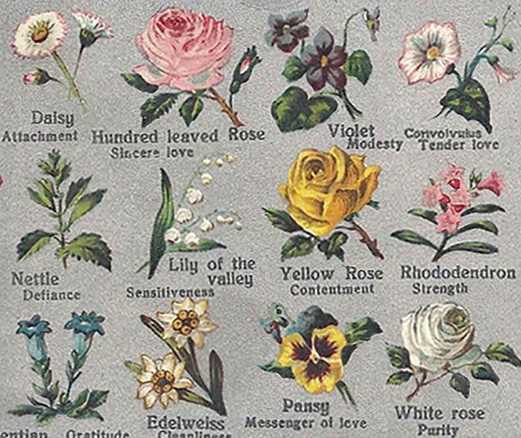
Funerals are a time when we come together to commemorate the life of a loved one and say our final goodbyes. Flowers play a significant role in funeral traditions across cultures, as they symbolize different emotions and meanings associated with loss and mourning.
Sympathy Flowers
One of the most common types of flowers used for funerals is sympathy flowers. These flowers are typically sent to the bereaved family as a gesture of support and condolences. Sympathy flowers can include arrangements such as white lilies, roses, or chrysanthemums, which symbolize purity, love, and eternal life.
Funeral Wreaths
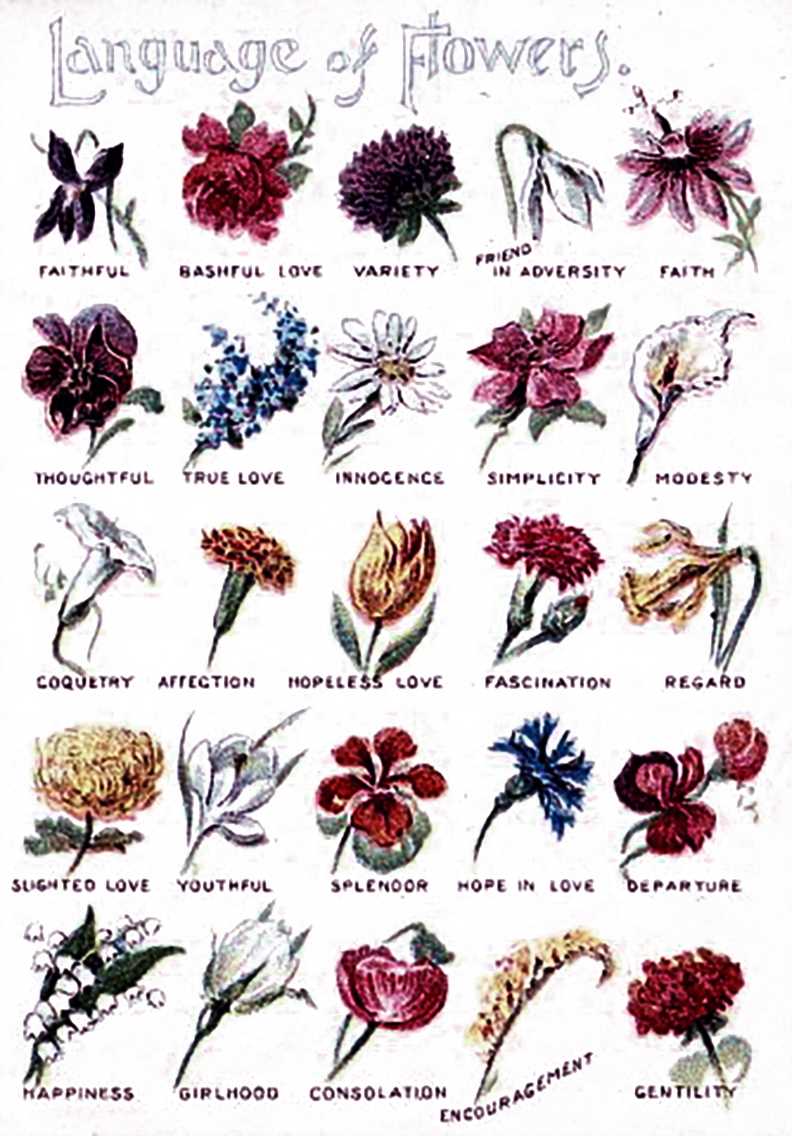
Funeral wreaths are circular arrangements that are commonly placed on or near the casket. They symbolize eternity, as the circular shape has no beginning or end. Funeral wreaths are often adorned with flowers like roses, carnations, or gerbera daisies, which represent love, remembrance, and purity.
Sprays and Crosses
Sprays and crosses are larger arrangements that are usually displayed on an easel at the funeral service. These arrangements often feature a mix of flowers, including gladioli, lilies, and roses. The gladioli represent strength of character, while lilies symbolize innocence and purity. The cross-shaped arrangements carry a religious meaning and represent the deceased’s faith.
Plants
In addition to traditional flower arrangements, plants can also be a popular choice for funeral tributes. Plants such as peace lilies, orchids, or azaleas are often sent to express sympathy and provide a lasting reminder of life and growth during a time of loss. These plants can be taken home by the bereaved family and serve as a living memorial.
Choosing the Right Flowers
When selecting flowers for a funeral or memorial service, it is important to consider the tastes and preferences of the deceased and their family, as well as any cultural or religious traditions. It is also essential to choose flowers that convey the appropriate emotions and sentiments during this difficult time.
In conclusion, flowers play a significant role in funerals and mourning, offering comfort, support, and beauty during a time of loss. They express our love, condolences, and memories of the deceased, and provide a tangible reminder of the lasting impact they had on our lives.
Q&A:
What is the meaning behind flowers?
The meaning behind flowers varies depending on the specific type of flower. Different flowers have different symbolism and can represent various emotions, feelings, or messages.
What do roses symbolize?
Roses are a popular flower that symbolizes love, beauty, and passion. They are often given as a romantic gesture to express deep affection towards someone.
What do sunflowers symbolize?
Sunflowers symbolize happiness, adoration, and warmth. They are often associated with positive and joyful feelings.
What does the lily symbolize?
Lilies have different meanings depending on their color. White lilies symbolize purity and innocence, while pink lilies symbolize prosperity and abundance. Overall, lilies are often associated with beauty and elegance.
What is the symbolism behind daisies?
Daisies are often associated with innocence and purity. They are also a symbol of new beginnings and can represent youthfulness and fertility.
What do tulips symbolize?
Tulips symbolize different things depending on their color. Red tulips are often associated with love and passion, while yellow tulips symbolize happiness and cheerful thoughts. Overall, tulips are often seen as a symbol of perfect love.
What is the meaning behind daffodils?
Daffodils symbolize rebirth and new beginnings. They are often associated with spring and are considered a symbol of hope and renewal.
Video:
Flower Color Meaning and Symbolism







